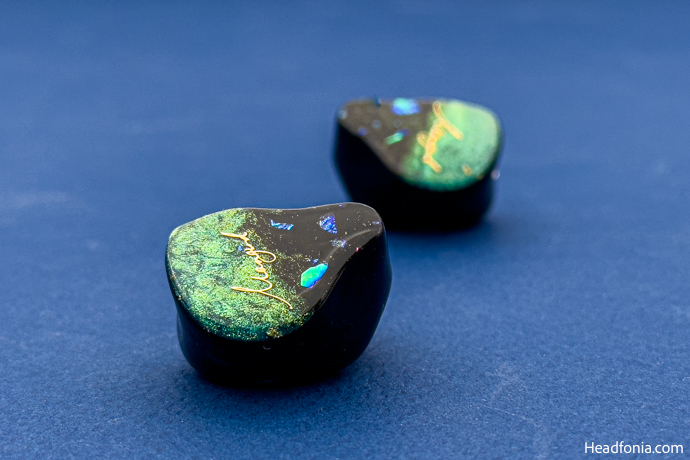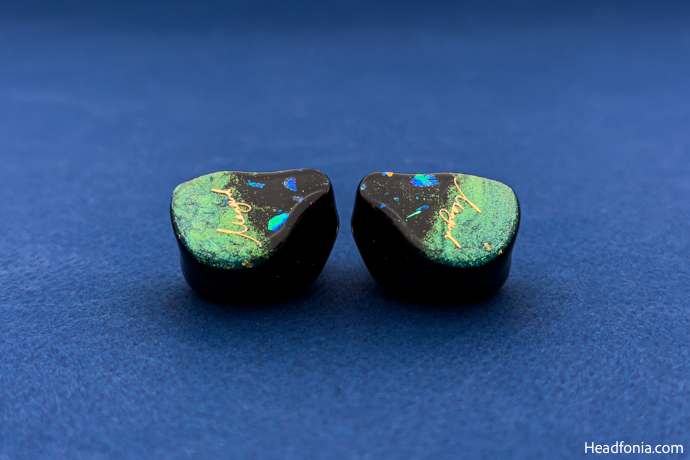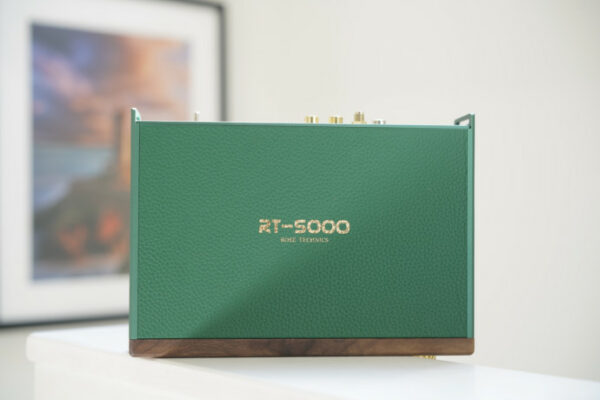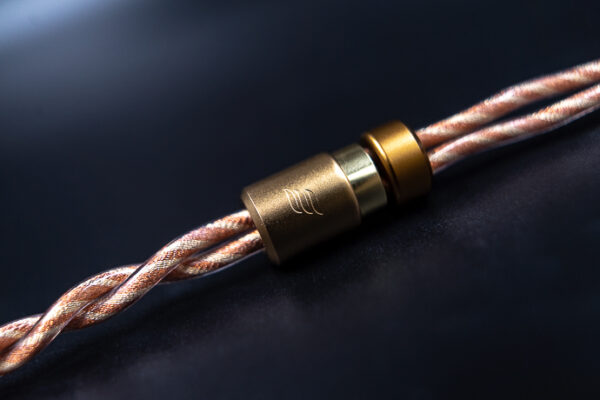XENNS Mangird Top – Sound
The Top IEMs offer an energetic and engaging sound signature that strikes a good balance between warmth and clarity. Drawing inspiration from the Harman target curve, the Top adds a touch of extra energy in the upper midrange and sub-bass regions, resulting in a lively and slightly warm presentation. The enhanced clarity from the upper midrange to the treble ensures a clean and detailed presentation and added bass will satisfy casual listeners. It appears that Mangird company aims to conquer all fronts with the Top.
Low
The low end of the Mangird Top IEMs are characterized by its impactful and slightly elevated sub-bass response. This added energy imbues the overall sound signature with slight warmth and depth, in exchange for a slight cost of control. It does not feel as snappy as the original Mangird Tea was, but the original Tea had a really limited bass response, too. The bass guitars and kick drums exhibit a good sense of authority and weight, while the extended sub-bass frequencies provide a satisfying rumble that enriches the listening experience without overwhelming or bleeding. I enjoyed the bass most of the time, but it’s a little more source-dependent than I’d hoped.

Bass can be slow on less technically impressive equipment, especially in genres prone to congestion, such as Metal, where track quality is often mediocre. While I didn’t notice this problem with sources like the Mojo 2 and Topping G5, I did experience it with a couple of DAPs. Especially those with warmer sound signatures. I found myself listening to a lot of electronic music with the Top, and I think these earphones, and especially the tuning options work really well for electronic music. The bass is rounded, textured, and punchy. It’s very hard not to tap your toes along with the Böhmer or Monolink.
Plus, I’ve seen some impressions online that some people think the amount of bass is too much. I have tried all the tips and tried to replicate it, but I don’t hear a bass that we call ”boomy” no matter how hard I try. These are sensitive and multi-driver IEMs, if you are hearing too much bass, try another source that has a lower output impedance.
Mid
The elevated bass range cuts around the mid-bass region, which improves the sense of air, whilst slightly reducing the natural thickness of instruments and male vocals. The mids feel clean and clear, with good articulacy. Nothing feels boomy or out-of-tune here. Tonality is on the slimmer side of the scale but only by a small margin.

The midrange on the Mangird Top IEMs is where the additional energy in the upper midrange truly shines. This elevation imparts a sense of vibrancy and excitement to vocals and instruments, without causing harshness or fatigue. Female vocals are presented with clarity and feel very detailed, while instruments such as guitars and pianos sound slightly more energetic and dynamic than they naturally are. The mids feel like they are more influenced by the energy from the upper midrange compared to the warmth from the elevated sub-bass. Overall, I like the clean and dynamic tuning here. The IEMs sound transparent but also engaging, a fine combination that we don’t see every day.
High
The treble frequencies on the Mangird Top IEMs are characterized by their clarity and extension. The increased energy in the upper midrange translates into a detailed and airy treble response, revealing the complexities of high-frequency instruments like cymbals and violins. The well-tuned upper treble ensures that these details are presented with air and without introducing sibilance, without experiencing fatigue. The IEMs can reach the top octave without shrill, on top of that, the presence and sparkle in this range ensure that high-frequency instruments and harmonics are accurately represented, enhancing the overall clarity and detail retrieval.

Overall, I like the energetic take here also. I find the Top quite engaging to listen to, especially with artists like Ben Böhmer. Judging by the treble dominance in his albums, I am almost sure that he is daily driving his DT1990 Pro as effectively as possible.
Overall, the elevated sub-bass presentation and enhanced upper midrange energy create an immersive and engaging listening experience that is both detailed and enjoyable at the same time. As I said: We don’t come across this kind of tuning enough.
Technical Capability
The Mangird Top IEMs offer a good technical foundation. While this particular tuning and hybrid design have some positive aspects, there are areas where improvements could be made. The Top is not the best when it comes to PRaT and with sub-optimal sources, it can’t deal with multi-instrumented complex passages. I find the reason to be mostly the DD that Mangird used in this config. It is not as fast as ThieAudio’s LCP DD in this regard. Thanks to the overall clean upper midrange to treble region, the Top IEMs present a moderately spacious soundstage, providing listeners with a good sense of width and depth for the price. The imaging is also good, allowing listeners to identify the location of individual instruments and vocals within the soundstage with ease, especially whilst playing genres that have limited instruments on stage.
To wrap it up, after a few weeks of testing, the Mangird Top IEMs seemed to work best with electronic music, thanks to their impactful low-end and sparkling highs. Electronic music often relies on punchy bass lines, synthesized melodies, and intricate layering, all of which the XENNS Mangird Top IEMs do a reasonably good job of capturing. Its interesting tuning help to convey the spatial dynamics often found in electronic tracks, while the enhanced bass response adds depth and excitement to the listening experience. Although they are not perfect, the Mangird Top IEMs provide a satisfactory performance that highlights the unique characteristics and complexities of the electronic music genre, making the Top a suitable option for EDM and similar genres.

Comparisons
vs. ThieAudio Oracle MKII
The Oracle MKII utilizes a 1DD+2BA+2EST configuration and is a direct competitor to the Top. Both IEMs share a similar form and factor and they are almost identical in size. Mangird’s ability to shove 9 drivers inside of this compact shell is truly impressive and for some unknown reason, The Top feels more comfortable in my ears. Its inner shell curvature is slightly lower than Oracle MKII and I suspect that may be the reason behind this. It is also distinctively lighter than the Oracle MKII.
In terms of sound, the most obvious and easily perceptible difference between the two is tonality. The Mangird Top has slightly more upper treble and treble extension and feels more expansive towards the top. Both have similar, energetic upper midranges, but the Mangird Top offers superior control. Both monitors offer similar, slightly emphasized bass ranges. The Mangird Top surprised me in this regard, offering an excellent low-end that almost matches the Oracle MKII in quantity.
The quality is also surprisingly good. The most important difference between the Oracle MKII and the Mangird Top is that the Mangird has slightly less mid-bass. This leads to a slightly thinner note weight, resulting in a less-than-ideal instrument body. For EDM and similar genres, go with the Mangird. If you want a good all-rounder, the Oracle MKII is a fine choice at this price bracket.
vs. Moondrop Variations ($520 USD)
Moondrop’s tribrid, Variations is another very good competitor in the sub-600 price bracket. The Variations feature 1DD+2BA+2EST drivers on each side and come with a rich package, similar to the Mangird Top. The accessories include a brilliant cable, replacement filters, and a great set of tips along with a chic carrying case. It also features a unique, frosted shell design that we haven’t seen many examples of.
In terms of sound, Variations’ strengths are its wide stage and spacious presentation. Compared to the Mangird Top, the presentation is more airy and expansive. Although the bass is slightly less in quantity, it feels more effortless. This feeling of ”effortlessness” is prevalent throughout the spectrum, it was one of the signature things that I loved about the Variations. Variations’ bass does not feel as agile as the Top, especially with genres like rock, and metal. Male vocals sound a little tinny on both IEMs, but both do a similar and impressive job in the mid and upper-frequency bands.

Last Words
The Mangird Top IEMs provide a vibrant and enjoyable listening experience that will appeal to both the audiophile and the casual listener, particularly those who are passionate about the electronic music genre. With enhanced bass and vibrant highs, combined with reliable technical performance, Mangird Top IEMs deliver an enjoyable experience at a relatively affordable price. They are a worthy option for those who are looking for a unique signature without breaking the bank.
Pro’s
- Energetic, dynamic and engaging sound signature
- Plenty of accessories and good packaging
- Fairly balanced yet fun
- Excellent fit
Cons
- Bass agility
- Source dependent
Page 1: XENNS / Mangird, Specs, Packaging & Accessories , Build Quality & Design
Page 2: Sound, Low, Mid, High, Technical Capability, Comparisons, Last Words








H1a8
Can you please give a quick comparison between the Top and the UP?
Jb06
Seconds that, would be nice. I own the Xenns up and it’s one of my favorite set, so curious how the two compare.